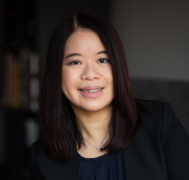A tale of two worlds
According to the US Census Bureau, in 2021, 37.9 million Americans lived in poverty. That’s about 11.6% of the country’s population, and sadly, it’s about the same level of poverty compared to 50 years ago.

We have a responsibility as an industry to do more to improve financial security for more people
“While Covid might be in our rear view, the lines at our local food pantries certainly haven’t subsided.” Those were the sentiments echoed in a recent New York Times interview by Justin Brannan, chair of New York City Council’s Finance Committee. New York City is a jurisdiction where 1.5 million people are experiencing food insecurity, including one in four children, according to a 2021 analysis by Feeding America. Nationally, it is estimated that at least 53 million people — one in six — turned to food banks, food pantries and other private food assistance programmes in 2021.
Take the state of Minnesota for example, where nearly 275,000 Minnesota K-12 students are on free and reduced meals, and approximately one in six are “food insecure” — meaning they don’t know when their next meal will be.
A basic right or a privilege?
For a moment, I can’t help but remember what Matthew Desmond wrote in his new book: Poverty, By America. “This is who we are: the richest country on earth, with more poverty than any other advanced democracy,” Desmond says. Homelessness, water scarcity and food insecurity are not challenges faced only by those in poor countries; they exist in our backyard as well.
According to the US Department of Agriculture (USDA), 12.5% of households with children (4.6 million households) were food insecure at some time in 2021. 2.2 million Americans lack running water and basic indoor plumbing. And during the school year 2020-2021, 2.21% of all enrolled students in public school districts from kindergarten through 12th grade were homeless, amounting to 1,096,669 children and youth, spending the nights in cars, parks, campgrounds, motels, abandoned buildings, transitional housing and shelters.
More than 41 million Americans receive federal SNAP benefits — and they rely on these benefits to put food on the table each month. At a time when the temporary boosts to SNAP benefits are now ending (after the February 2023 issuances), not only are these households receiving less as a result, but food prices are also 9.5% higher than in February 2022. And this will continue to grow. According to the USDA’s forecast, in 2023, all food prices are predicted to increase 7.5%.
Meanwhile, consumers racked up $180 billion in new credit card debt in 2022, the most ever added in a single year. No wonder a recent poll showed that more than a third of US adults are stressed out over money. Given the confluence of inflation and massive layoffs, we will likely reach new heights — yet again.
In the world’s largest economy, a country with a GDP of $23.32 trillion, all of these facts can be hard to imagine. Where can our country’s most vulnerable population turn to at a time when their social safety net is dwindling?
Inequality is a policy choice — but we all have a role to play
While much needs to be done from a policy perspective, we do have a role to play within financial services, to invest in the poor and bring about more opportunities for those in need.
Take buy now, pay later (BNPL) as an example. While revenue from online BNPL purchases rose by 27% from 2022 to 2023, it is worth noting — and worrisome — that the number of BNPL online grocery orders increased by 40% within just the first two months of 2023, accounting for $86.8 billion in purchases. It’s never a good sign when you must pay for your daily essentials in installments or finance a gas bill just to be able to drive to work. With a sustained increase in the cost of living, consumers need more help than ever to manage their cash flow. Especially given the wide array of financial relationships and payment terms — things can get chaotic real fast.
As an example, what if there is an app that can help consolidate, track, plan and pay all the bills, including BNPL, in one place? I recently spotted a new app called Cushion Bill Pay that promises to do exactly that. While I haven’t tried the app myself, I am encouraged by their focus as well as the team that backs the company.
According to a recent Consumer Financial Protection Bureau (CFPB) report, BNPL borrowers were, on average, much more likely to be highly indebted, have delinquencies in traditional credit products and use high-interest financial services such as payday loans and overdrafts compared to non-BNPL borrowers. If we can provide the right tools for consumers to help them better manage their finances, coupled with regulatory changes to rein in unnecessary high fees and protect the public from predatory business practices, this can help prevent some consumers from getting into a downward spiral.
Can we envision a more equal world?
From expanding homeownership to empowering financial education at a young age, we have a responsibility as an industry to do more to improve financial security for more people and create a more equal society. The good news is, we also have the tools, the technology and the resources at our disposal to create new business models, to serve more people better and to empower those who are less fortunate.
If not now, then when?
 About the author
About the author
Theodora (Theo) Lau is the founder of Unconventional Ventures. She is the co-author of Beyond Good and co-host of One Vision, a podcast on fintech and innovation.
She is also a regular contributor for top industry events and publications, including Harvard Business Review and Nikkei Asian Review.











































